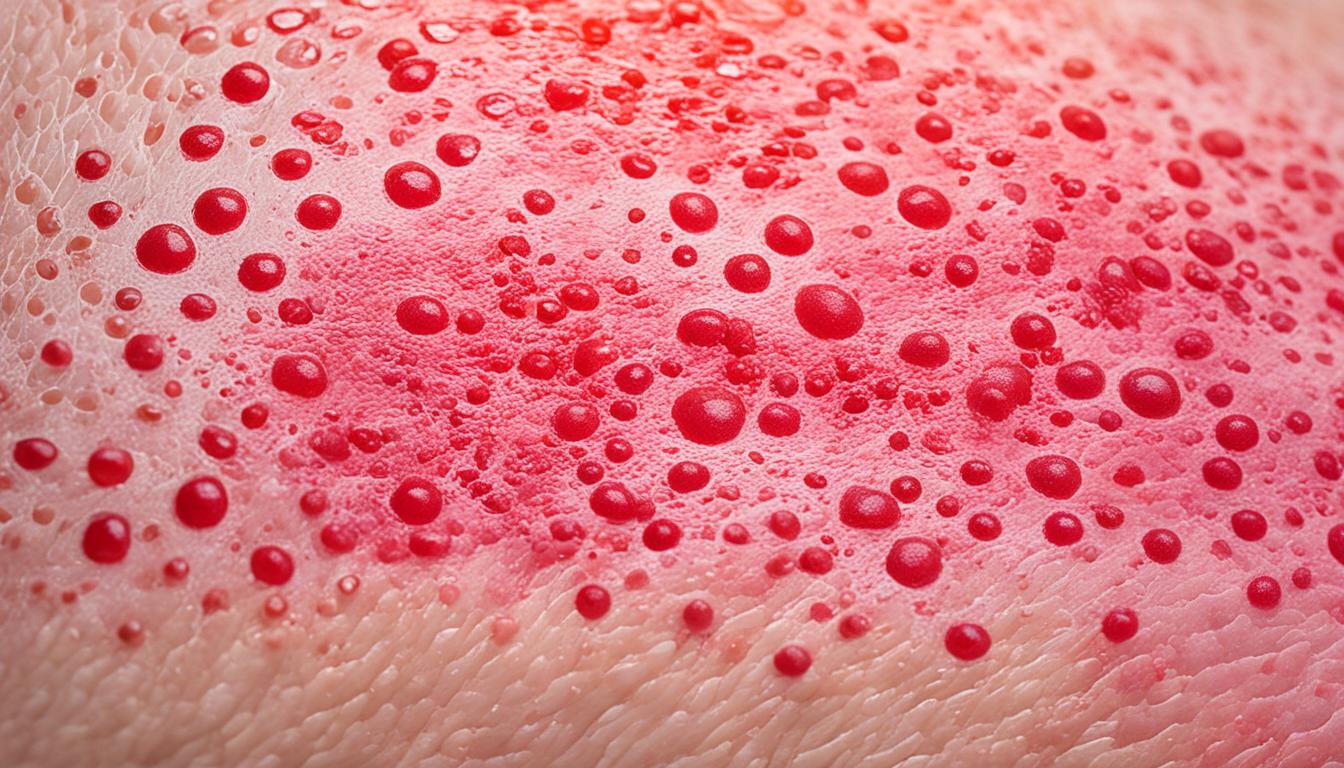Poison ivy is a plant that leads to an itchy, uncomfortable rash. It’s all thanks to the oil urushiol, found in every part of the plant. This rash happens when the oil touches our skin directly or through things that have also touched the plant. Signs of a poison ivy rash include redness, swelling, and an itchy feeling, starting within hours or days after contact.
The best way to deal with a poison ivy rash is by using antiseptic creams, steroids, and antihistamines. It’s crucial to keep the rash clean, avoid getting it wet, and not scratch it to dodge infections. To steer clear of a poison ivy rash, wear protective gear, wash items that may have gotten the oil on them, and never burn these plants.
Key Takeaways:
- Poison ivy can cause an itchy rash on the skin due to the plant oil, urushiol.
- The rash develops within hours to days of exposure and may include redness, swelling, and itching.
- Treatment options for poison ivy rash include antiseptic creams, steroids, and antihistamines.
- Prevention involves wearing protective clothing, washing items that may have come into contact with the plant, and avoiding burning the plants.
What is Poison Ivy and What Causes a Poison Ivy Rash?
Poison ivy is a plant found in wooded areas, fields, and thick underbrush. It often grows as a shrub or vine. It is recognizable by its three bright green leaves on each stem that turn red in fall.
The rash happens when you touch the plant’s oil, urushiol. You can get the oil on your skin by touching any part of the plant, like the leaves or flowers. It can also spread through pets, objects, or even people carrying the oil.
This rash is an allergic reaction to urushiol. It can show up within hours to days after touching the plant. If you scratch your skin and it still has oil, the rash might spread. Immediately rinsing your skin with cool water and washing with soap helps reduce the rash’s impact.
This picture shows a poison ivy plant with its unique three green leaves.
Symptoms and Treatment of Poison Ivy Rash
Getting a poison ivy rash is very uncomfortable. But, knowing how to spot it and treat it can make things better. A poison ivy rash is red, swollen, and itchy. It might show up in thick patches or thin lines after touching the plant. You might also get blisters that leak clear or yellow fluid, then scab over.
Treating the rash has a few options. Antiseptic creams or ointments can help. They reduce itching and dry the rash. Steroids, like creams or pills, are used to lessen itching and swelling. They can speed up the healing process. And, antihistamines might be given to help you sleep better by stopping the itch.
To feel better, keep the rash clean and dry. Don’t scratch it. This can make things worse. Instead, use cool compresses or take baths to stop the itch and lower swelling.
If the rash gets really bad or infected, see a doctor. They can give stronger medicine. This will help you heal properly and avoid complications.
Preventing poison ivy is the best option. Wear long clothes and use skin lotion to block the plant’s oil, urushiol. Always wash your clothes, shoes, and tools after being near poison ivy.
Knowing how to treat a poison ivy rash can save you a lot of pain. By being careful and informed, you can prevent getting this rash altogether.
Prevention and Conclusion
To avoid getting a poison ivy rash, take some precautions. For areas with poison ivy, wear long pants, long-sleeved shirts, and gloves. This cuts down the chance of touching the plant’s oil, urushiol.
Along with the right clothes, using skin block lotion adds more protection. This lotion creates a barrier that stops urushiol from touching your skin.
After being near poison ivy, make sure to clean your stuff well. Wash clothes, shoes, and tools separately. Use the right cleaners to get rid of urushiol.
Knowing what poison ivy looks like is key. Look for the three shiny green leaves, which may turn red in the fall. Stay away from this plant to avoid its rash.
To wrap up, these steps help prevent a poison ivy rash. Be aware, be careful, and enjoy the outdoors worry-free.

